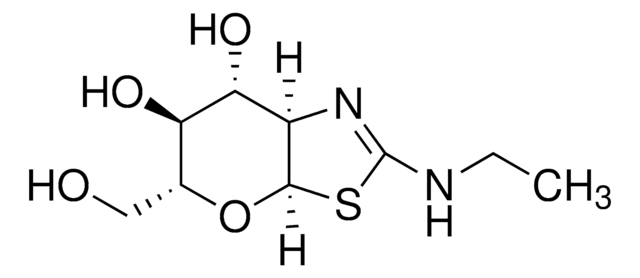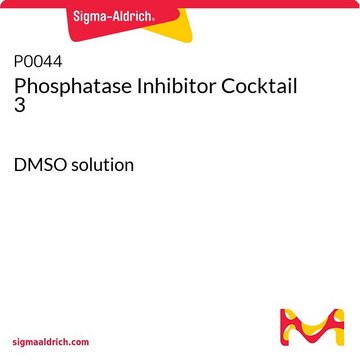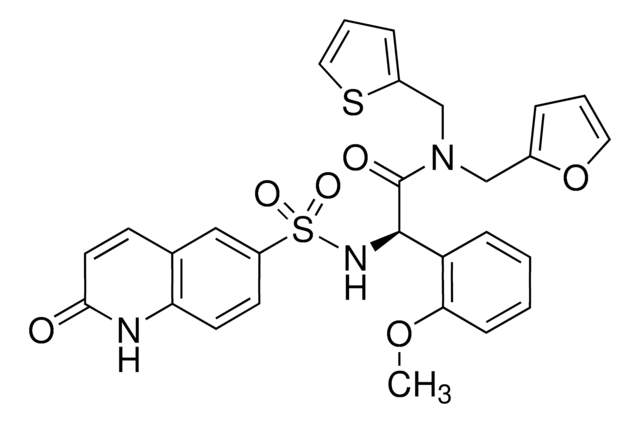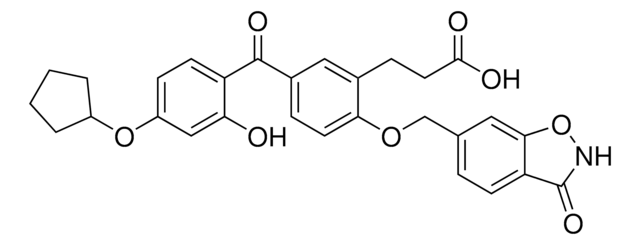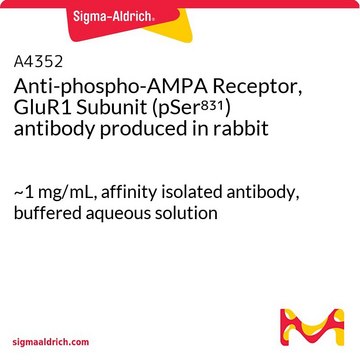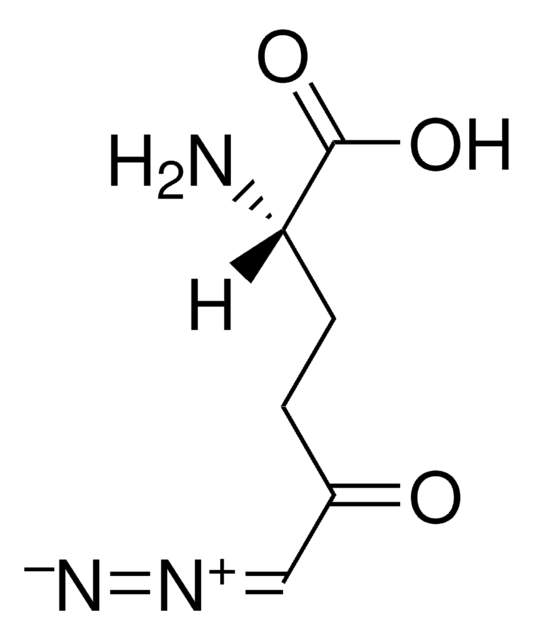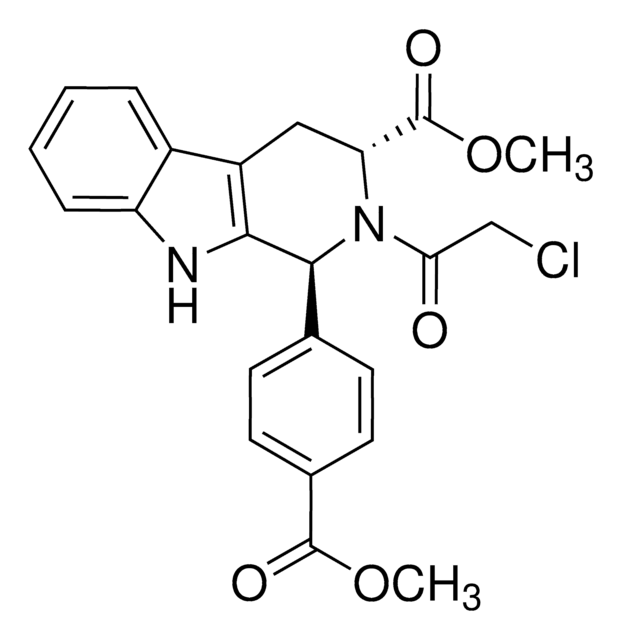A7229
PUGNAc
≥95% (HPLC)
Synonym(s):
O-(2-Acetamido-2-deoxy-D-glucopyranosylidenamino) N-phenylcarbamate
About This Item
Recommended Products
Quality Level
Assay
≥95% (HPLC)
form
crystals
storage temp.
−20°C
SMILES string
CC(=O)N[C@@H]1[C@@H](O)[C@H](O)[C@@H](CO)O\C1=N/OC(=O)Nc2ccccc2
InChI
1S/C15H19N3O7/c1-8(20)16-11-13(22)12(21)10(7-19)24-14(11)18-25-15(23)17-9-5-3-2-4-6-9/h2-6,10-13,19,21-22H,7H2,1H3,(H,16,20)(H,17,23)/b18-14-/t10-,11-,12-,13-/m1/s1
InChI key
PBLNJFVQMUMOJY-JXZOILRNSA-N
Looking for similar products? Visit Product Comparison Guide
Application
Biochem/physiol Actions
Storage Class Code
11 - Combustible Solids
WGK
WGK 3
Flash Point(F)
Not applicable
Flash Point(C)
Not applicable
Personal Protective Equipment
Choose from one of the most recent versions:
Already Own This Product?
Find documentation for the products that you have recently purchased in the Document Library.
Customers Also Viewed
Articles
Glucose metabolism is regulated by the opposing actions of insulin and glucagon. Insulin is released from pancreatic ß cells in response to high blood glucose levels and regulates glucose metabolism through its actions on muscle, liver, and adipose tissue.
Our team of scientists has experience in all areas of research including Life Science, Material Science, Chemical Synthesis, Chromatography, Analytical and many others.
Contact Technical Service